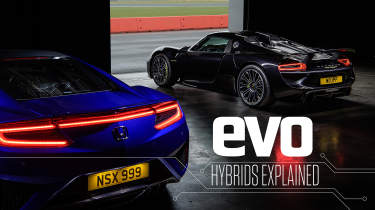What is a parallel hybrid?
The hybrid performance car is no longer an oxymoron. Here’s how manufacturers are using this new tech to make them better, not just greener
Parallel hybrid
This is where the hybrid story began, in production models such as the Toyota Prius and Honda Insight. Here, the standard petrol engine sits alongside a more substantial electric motor and battery pack. Unlike mild-hybrids, a parallel hybrid is able to drive for short periods of time purely from the electric motor, but then quickly reverts back to a combination of the electric and combustion motors.
You can’t charge most parallel hybrids, instead battery charge is delivered via regenerative braking and coasting, while the electric motor is generally only powerful enough to reach low urban speeds. The McLaren P1 was one of the first supercars (or a hypercar in this case) to utilise this technology, pairing a twin-turbocharged V8 with an electric motor and lithium-ion battery pack.
Unlike economy-based hybrid systems, the P1’s system was not designed to reduce fuel use at low speeds, but to serve as a torque-fill for the combustion V8 at low rpm before the turbos had a chance to spool. This differs from a mild-hybrid set-up by directly sending power to the drivetrain independently of the internal combustion engine, rather than assisting the turbos mechanically before combustion. The McLaren Speedtail is also a parallel hybrid in that sense, but has a much larger electric motor and battery pack that adds a total of 230kW or 308bhp for a 1055bhp maximum figure. The P1 also differs from most other parallel hybrids by having the need to be charged, but this is due to it not having the ability to draw power from a regenerative braking system, which was specified by McLaren engineers as so not to negatively influence brake feel.
This is where combined and maximum power figures can become more opaque than a simple brake horsepower figure though. Some manufacturers like to quote total system power which is a sum of the total power from each power source. This doesn’t accurately represent how much power the car is able to produce at any one time though, as the electric motor and combustion engine will reach those peaks at different points in the rev range. The more accurate figure as given to us by McLaren for example, is a maximum figure which is the highest power figure the two motors will produce together at any one time in the rev range.
Parallel hybrid performance cars
Pro: Proven tech, able to be scaled easily, relatively inexpensive
Con: Power boost proportionately small considering the extra weight of system





